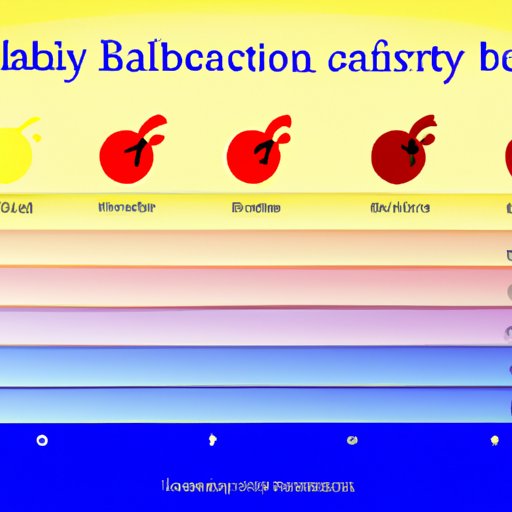Introduction
The question of “when are most babies born” can be a difficult one to answer. That’s because there is no single answer that applies to all babies. Each baby is unique and will be born according to its own timeline. However, it is possible to look at averages and trends to gain an understanding of when most babies are likely to be born.
In this article, we will explore the average time of birth for newborns, take a look at the most common time of year for babies to be born, examine the seasonal patterns in birth rates, investigate the relationship between birth rates and climate, analyze the impact of holidays on birth rates, and compare birth rates around the world.
Examining the Average Time of Birth for Newborns
The average gestation period for a human baby is 40 weeks. This means that most babies will be born within a week or two of their due date. However, there are many factors that can influence the timing of birth. These include maternal health, the size of the baby, and the mother’s age.
It is important to note that while the average gestation period is 40 weeks, some babies may be born earlier or later than this. Babies who are born before 37 weeks are considered preterm and those born after 42 weeks are considered post-term. Preterm births are more likely to have health complications and require extra medical attention.

A Look at the Most Common Time of Year for Babies to Be Born
Statistics show that there is a seasonal pattern when it comes to the timing of birth. In the United States, the peak months for births are August and September, with the lowest number of births occurring in February. This pattern is seen in other countries as well.
There are several reasons why certain times of year may be more popular for births. For instance, couples may plan to conceive so that their child is born during a certain season in order to take advantage of the weather or to ensure that their child will not miss any school days. Additionally, some couples may prefer to conceive during certain holidays such as Christmas or New Year’s Day.
Exploring the Seasonal Patterns in Birth Rates
Researchers have studied the seasonal patterns in birth rates in order to better understand the underlying causes. One factor that is often examined is the influence of climate on birth rates. It has been suggested that the weather may play a role in influencing when a woman decides to give birth.
Another factor that has been explored is the role of holidays on birth rates. It is believed that holidays, particularly religious holidays, may influence when couples choose to conceive. Additionally, public holidays, such as Independence Day in the United States, may also impact the timing of birth.

Investigating the Relationship Between Birth Rates and Climate
In order to better understand the relationship between birth rates and climate, researchers have looked at the impact of weather on birth rates. Studies have found that warmer temperatures are associated with higher birth rates, while colder temperatures are associated with lower birth rates.
Additionally, researchers have analyzed the correlation between temperature and birth rates. They have found that higher temperatures tend to result in higher birth rates, while lower temperatures tend to result in lower birth rates. This suggests that climate can play a role in influencing the timing of birth.
Analyzing the Impact of Holidays on Birth Rates
Researchers have also examined the impact of religious holidays on birth rates. Studies have found that religious holidays, such as Easter and Christmas, are associated with higher birth rates. This suggests that couples may be more likely to conceive during these holidays.
In addition, researchers have investigated the effect of public holidays on birth rates. Studies have found that public holidays, such as Independence Day in the United States, are associated with higher birth rates. This suggests that couples may be more likely to conceive during these holidays.

Comparing Birth Rates Around the World
Finally, researchers have compared birth rates around the world. They have found that there are regional differences in birth rates. For example, birth rates tend to be higher in Latin America and Africa than in Europe and North America. Additionally, researchers have identified global trends in birth rates. They have found that birth rates have been declining in many developed countries, while they have been increasing in many developing countries.
Conclusion
In conclusion, this article has explored when are most babies born. We examined the average time of birth for newborns, looked at the most common time of year for babies to be born, explored the seasonal patterns in birth rates, investigated the relationship between birth rates and climate, analyzed the impact of holidays on birth rates, and compared birth rates around the world.
Overall, it is clear that there is no single answer to the question of when are most babies born. However, by looking at averages and trends, we can gain insight into when most babies are likely to be born. We can also see that climate, holidays, and regional differences can all influence the timing of birth.


